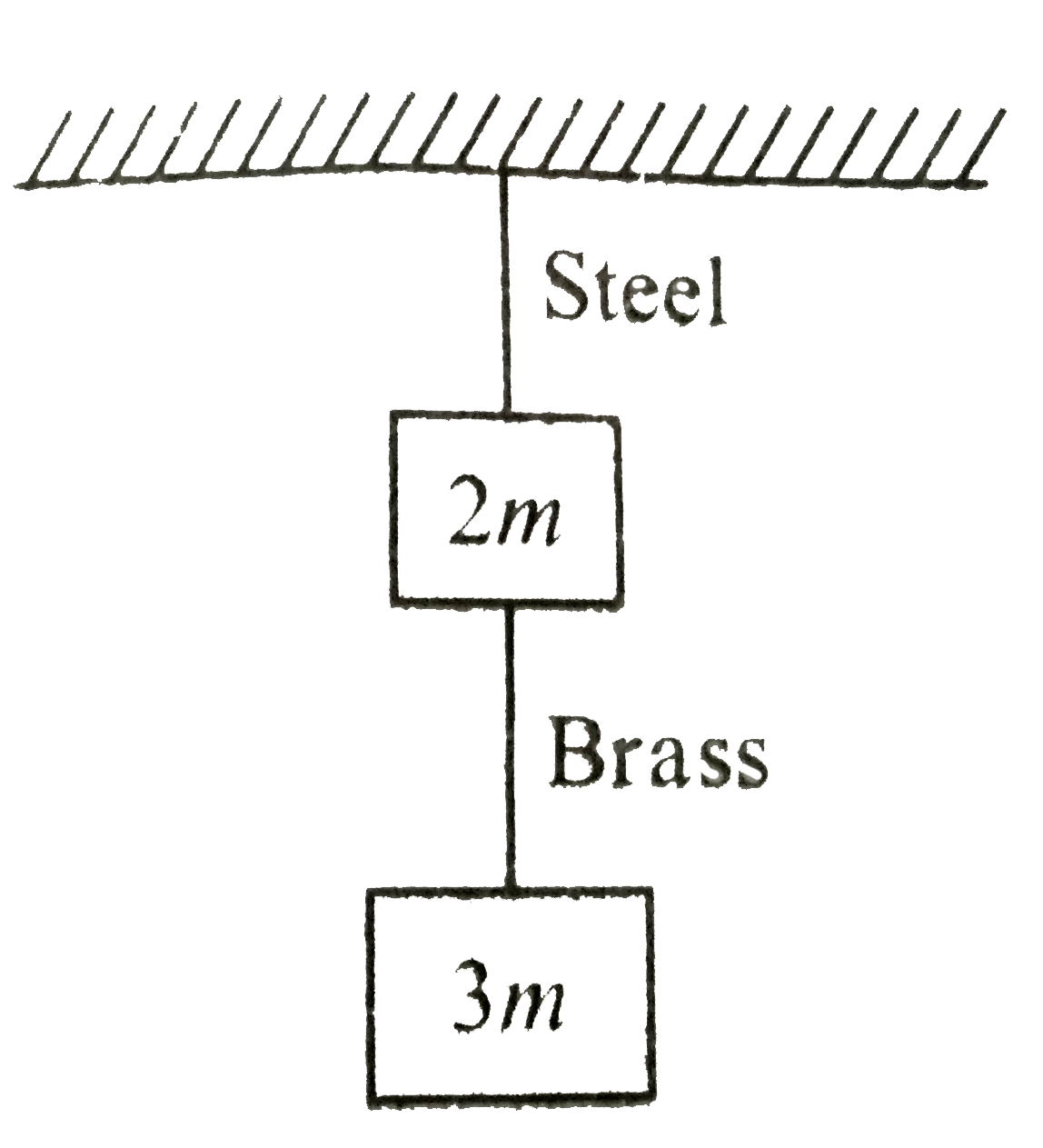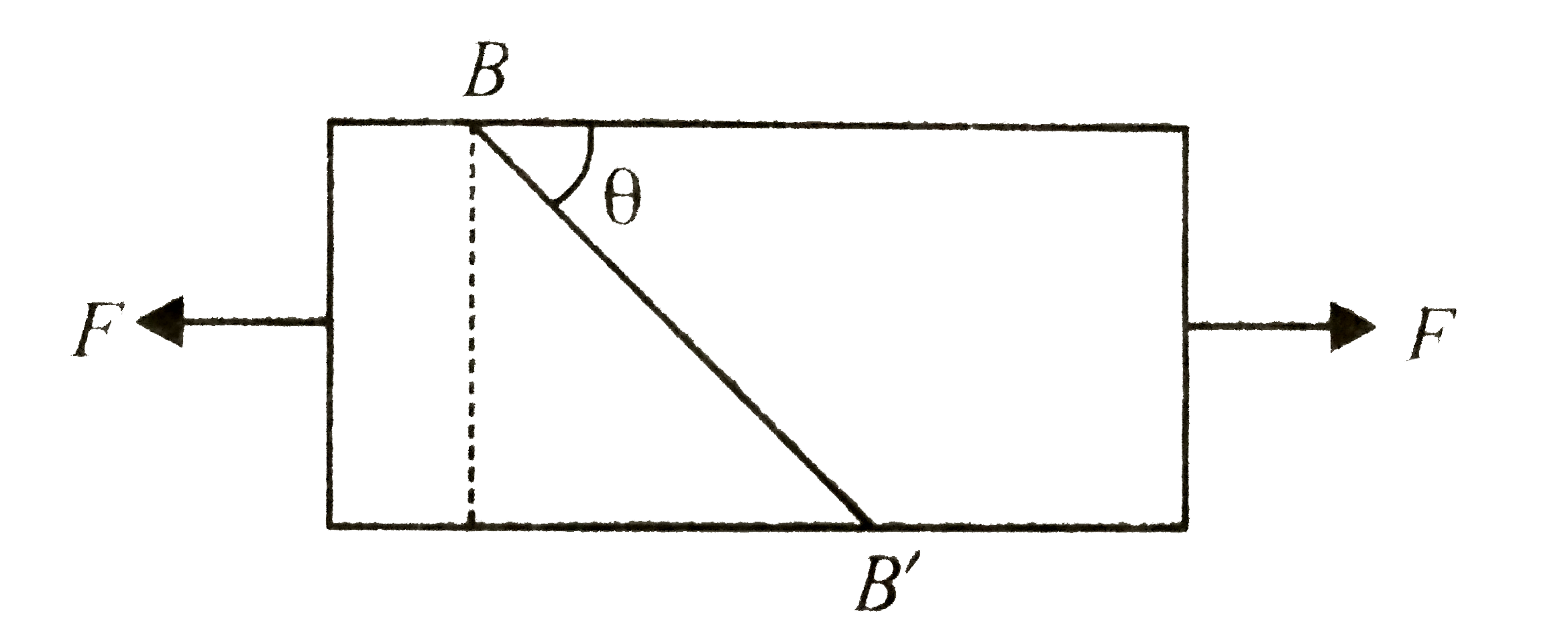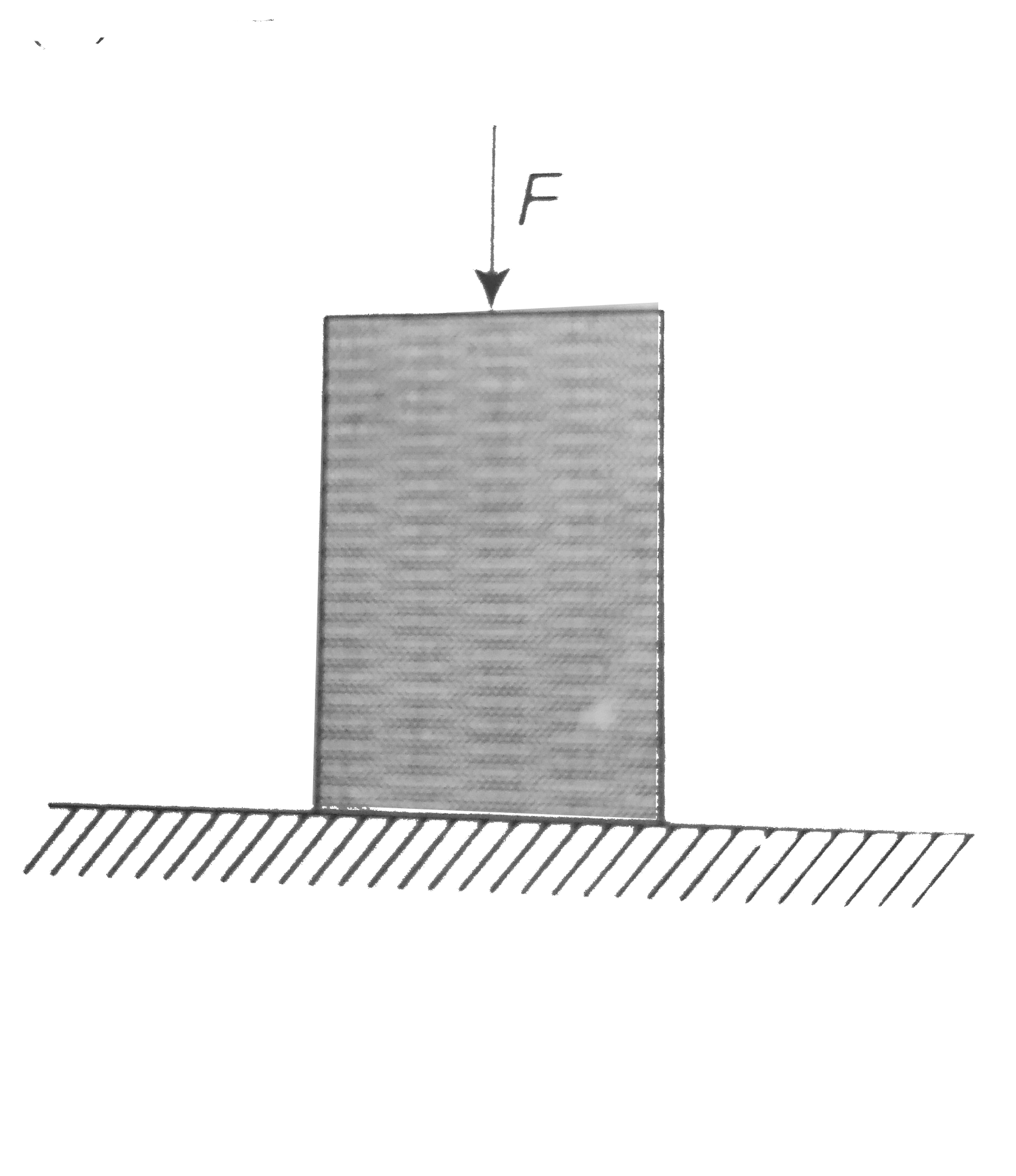Complete Solutions to Elastic Moduli of chapter MECHANICAL PROPERTIES OF SOLIDS of Class 11 book with complete answers and questions
| Class 11 | PHYSICS |
| Chapter | MECHANICAL PROPERTIES OF SOLIDS |
| NCERT FINGERTIPS | Elastic Moduli |
| Number Of Questions | 69 |
| Academic Year | 2023-24 |
The ratio of tensile stress to the longitudinal strain is defined as
01:43View SolutionWhich of the following statements is incorrect?
05:19View SolutionFor a perfectly rigid body
01:10View SolutionIdentical springs of steel and copper `(Y_("Steel") gt Y_("copper"))` are equally stretched.
06:02View SolutionLet `Y_(s)` and `Y_(A)` represent Young's modulus for steel and aluminium respectively. It is said that steel is more elastic than aluminium.Therefore, it follows that
01:50View SolutionWhich of the following substances has highest value of Young's modulus?
00:52View SolutionIf the work done in stretching wire by `1mm` is `2J`, then work necessary for stretching another wire of same material but with double radius of cross -section and half of the length by `1 mm` is
06:03View SolutionThe following four wires are made of the same material which of these will have the largest extension when the same tension is applied
03:34View SolutionFour identical hollow cylindrical cloumns of steel support a big structure of mass 50.000 kg. the inner and outer radii of each column are 30 cm and 60 cm respectively. Assume the load distribution to be uniform , calculate the compressional strain of each column. the Young's modulus of steel is `2.0 xx 10^(11) Pa`.
04:41View SolutionThe elastic energy stored per units volume in a streched wire is
View SolutionTwo wires of the same material and length but diameter in the ratio 1: 2 are stretched by the same load. The ratio of elastic potential energy per unit volume for the two wires is
01:44View SolutionYoung's modulus of a wire depends on
00:54View SolutionA light rod of length 2 m is suspended ceiling horizontally by means of two vertical wires of equal length tied to its ends. One of the wires is ade of steel and is of cross-section 0.1 cm and the other of brass of cross-section 0.2 cm. Along the rod at what distance a weight may be hung to produce stresses in the wires?
`(Y_("Steel") = 2 xx 10^(11) Nm^(-2), Y_("Bass") = 1 xx 10^(11) Nm^(-2))`04:04View SolutionIn the question number 36, at which distance a weight may be hung along the rod, in order to produce equal strains in both the wires?
View SolutionA wire of length L and radius r is clamped at one end. On stretching the other end of the wire with a force F, the increase in its length is `l`. If another wire of same material but of length 2L and radius 2r is stretched with a force 2F, the increase in its length will be
02:56View SolutionThe radii and Young's moduli of two uniform wires A and B are in the ratio `2:1` and `1:2` respectively. Both wires are subjected to the same longitudinal force. If the increase in length of the wire A is one percent, the percentage increase in length of the wire B is
03:23View SolutionA steel cable with a radius 2 cm supports a chair lift at a ski area. If the maximum stress is not to exceed `'10^8 N m^(-2)`, the maximum load the cable can support
01:23View SolutionA steel rod of length 1 m and radius 10 mm is stretched by a force 100 kN along its length. The stress produced in the rod is `Y_(Steel)=2xx10^(11)Nm^-2`
01:26View SolutionIn the question number 11, the percentage strain produced in the rod is
View SolutionA steel wire can support a maximum load of W before reaching its elastic limit. How much load can another wire, made out of identical steel, but with a radius one half the radius of the first wire, support before reaching its elastic limit?
01:29View SolutionA uniform rod of mass m. length L, area of cross- secticn A is rotated about an axis passing through one of its ends and perpendicular to its length with constant angular velocity o in a horizontal plane If Y is the Young's modulus of the material of rod, the increase in its length due to rotation of rod is
07:51View SolutionA wire stretches by a certain amount under a load. If the load and radius are increased to four times, find the stretch caused in the wire.
03:40View SolutionA cord of mass m length L, area of cross section A and Young's modulus y is hanging from a ceiling with the help of a rigid support. The elogation developed in the wire due to its own weight is
03:58View SolutionIn the question number 46, if the mass M is hung the free end of the wire, then the extension produc in the wire is
View SolutionA 14.5 kg mass, fastened to the end of a steel wire of unstretched length 1m, is whirled in a vertical circle with an angular velocity of `2 rev.//s` at the bottom of the circle. The cross-sectional area of the wire is `0.065 cm^(2)` . Calculate the elongaton of the wire when the mass is at the lowest point of its path `Y_(steel) = 2 xx 10^(11) Nm^(-2)`.
04:23View SolutionA wire of length L and area of cross-section A, is stretched by a load. The elongation produced in the wire is I. If Y is the Young's modulus of the material of the wire, then the torce corstant of the wire is
01:58View SolutionA metal wire of length `L_1` and area of cross section A is ttached to a rigid support. Another metal wire of length `L_2` and of the same cross sectional area is attached to the free end of the first wire. A body of mass M is then suspended from the free end of the second wire, if `Y_1` and `Y_2` are the Young's moduli of the wires respectively the effective force constant of the system of two wires is
03:36View SolutionThe area of a cross-section of steel wire is `0.5 cm^(-2)` and Young's modulus of steel is `2 xx 10^(11) N m^(-2)`. The force required to stretch by 0.5% of its length is
02:23View SolutionA stone of mass `m` is tied to one end of a wire of length `L`. The diameter of the wire is `D` and it is suspended vertically. The stone is now rotated in a horizontal plane and makes an angle `theta` with the vertical. If Young's modulus of the wire is `Y`, then the increase in the length of the wire is
02:32View SolutionWhen the load on a wire is slowly increased from `3kgwt` to `5 kg wt`, the elongation increases from `0.61` to `1.02 mm`. The work done during the extension of wire is
05:51View SolutionIf the ratio of diameters,lengths and Young's moduli of steel and brass wires shown in the figure are p, q and r respectively . Then the corresponding ratio of increase in their lenghts would be
 04:18View Solution
04:18View SolutionA copper wire of length 2.4 m and a steel wire of length 1.6 m, both of diameter 3 mm, are connected end to end. When stretched by a load, the net elongation found to be 0.7 mm. The load appled is
`(Y_("Copper") = 1.2 xx 10^(11) N m^(-2) , Y_("steel") = 2 xx 10^(11) N m^(-2))`06:33View SolutionIn the question number 55, the ratio of elongation of steel to the copper wires is
View SolutionA steel wire of length 4.5 m and cross-sectional area `3 xx 10^(-5) m^(2)` stretches by the same amount as a copper wire of length 3.5 m and cross-sectional area of `1 xx 10^(-5) m^(2)` under a given load. The ratio of the Young's modulus of steel to that of copper is
03:05View SolutionThe young's modulus of a wire of length (L) and radius (r ) is Y. If the length is reduced to` L/2` and radius `r/2` , then its young's modulus will be
01:37View SolutionA Copper wire and steel of the same diameter and length are connected end to end and a force is applied, which stretches their combined length by 1 cm. The two wires will have
01:56View SolutionWhich of the following apparatus is used to determine the Young's modulus of the material of a gives given wires?
01:33View SolutionHow does Young's modulus change with rise in temperature?
00:49View SolutionThe length of a rubber cord is `l_(1)` m when the tension is 4 N and `l_(2)` m when the tension is 6 N.The length when the tension is 9 N, is
04:16View SolutionThe ration of shearing to the shearing strain is defined as
01:44View SolutionThe shear modulus is also known as
00:57View SolutionWhich one of the following statements is correct? In the case of
03:59View SolutionA bar of cross- sectional area A is is subjected two equal and opposite tensile forces at its ends as shown in figure. Consider a plane BB' making an angle `theta` with length
 04:54View Solution
04:54View SolutionIn the question rumber 66, for what value of `theta`, shearing stress is maximum?
View SolutionTwo parallel and opposite forces each 5000 N are applied tangentially to the upper and lower faces of a cubical metal block of side 25 cm. the angle of shear is (The shear modulus of the metal is 80 Gpa)
01:52View SolutionThe edges of an aluminum cube are `10 cm` long. One face of the cube is firmly fixed to a vertical wall. A mass of `100 kg` is then attached to the opposite face of the cube. Shear modulus of aluminum is `25 xx 10^(9) Pa`, the vertical deflection in the face to which mass is attached is
04:25View SolutionFor most materials the Young's modulus is `n` times the modulus of rigidity, where `n` is
01:11View SolutionA square lead slab of side 50 cm and thickness 10 cm is subjected to a shearing force (on its narrow face) of `9xx10^4N`. The lower edge is riveted to the floor. How much will the upper edge be displaced? (Shear modulus of lead`=5.6xx10^9Nm^-2`)
04:10View SolutionThe metal cube of side 10 cm is subjected to a shearing stress of `10^(4) N m^(-2)`. The modulus of rigidity if the top of the cube is displaced by 0.05 cm with respect to its bottom is
02:20View Solution For an ideal iquid
04:15View SolutionWhich of the following statements is incorrect?
02:49View SolutionA sphere contracts in volume by `0.01%` when taken to the bottom of sea `1km` keep. The bulk modulus of the material of the sphere is (Given density of sea water may be taken as `1.0xx10^3kgm^-3`).
01:22View SolutionThe bulk modulus of water if its volume changes from `100 litres` to `99.5 litres` under a pressure of `100atm` is (Take `1atm=10^5Nm^-2`)
01:07View SolutionThe average depth of indian Ocean is about 3000 m. The fractional compression, `(triangleV)/(V)` of water at the bottom of the ocean is (Given Bulk modulus of the water `=2.2xx10^9Nm^-2` and `g=10ms^-2`)
03:38View SolutionThe density of water at the surface of ocean is `rho` . If the bulk modulus of water is `B`, then the density of ocean water at depth, when the pressure at a depth is `alphap_(0)` and `p_(0)` is the atmospheric pressure is
05:59View SolutionIf stress-strain relation for volametric change is in the from `(DeltaV)/(V_(0))= KP` where P is applied uniform pressure, then K stands for
02:00View SolutionOut of solids , liquids and gases, which one has all the three types of modulus ofelasticity and why gases have only bulk modulus of elasticity.
01:31View SolutionA glass slab is subjected to a pressure of 10 atm. The fractional change in its volume is
(Bulk modalus of glass `=37 xx 10^(9) Nm^(-2), 1 atm= 1 xx 10^(5) N m^(-2)`)01:47View SolutionTo What depth must a rubber ball be taken in deep sea so that its volume is decreased y 0.1 %. (The bulk modulus of rubber is `9.8 xx 10^8 Nm^(-2)` , and the density of seac water is `10^3 kg m^(-3).)`
03:43View SolutionThe compressibility of water is `5 xx 10^(-10) m^(2)//N` . If it is subjected to a pressure of 15 MPa, the fractional decrease in volume will be-
03:15View SolutionHow much pressure should be applied on a litre of water if it is to be compressed by 0.1%?
(Bulk modulus of water= 2100 MPa)01:51View Solution The volume change of a solid copper cube 10 cm on an edge, when subjected to a pressure of 7 MPa is
(Bulk modulus of copper 140 GPa)04:56View Solution
A metal cylinder of length `L` is subjected to a uniform compressive to a uniform compressive force `F` as shown in the figure. The material of the cylinder has Young's modulus `Y` and poisson's ratio `sigma` The change in volume of the cylinder is03:23View SolutionFor a given material, Young's modulus is 2.4 times that of rigidity modulus. Its Poisson's ratio is
01:31View SolutionA material has Poisson's ratio `0.50`. If a uniform rod of it suffers a longitudinal strain of `2 xx 10^(-3)`, then the percentage change in volume is
02:11View SolutionThe relation between Y. `eta` and B is
01:33View SolutionA material has a Poisson's ratio 0.3. It suffers a uniform longitudinal strain `4.5 xx 10^(-3)`, calculate the percentage change in its volume.
03:11View SolutionOne end of a nylon rope of length 4.5 m and diameter 6 mmis fixed to a tree limb. A monkey weighing 100 N jumps to catch the free end and stays there. Find the elongation of the rope and the corresponding change in the diameter. Young modulus of nylon =0.2.
06:42View SolutionIn question number 91, what will be the change in the diameter of the rope ?
View Solution
Elastic Moduli questions and complete solutions for chapter MECHANICAL PROPERTIES OF SOLIDS of NCERT FINGERTIPS PHYSICS (HINGLISH) of Class 11
